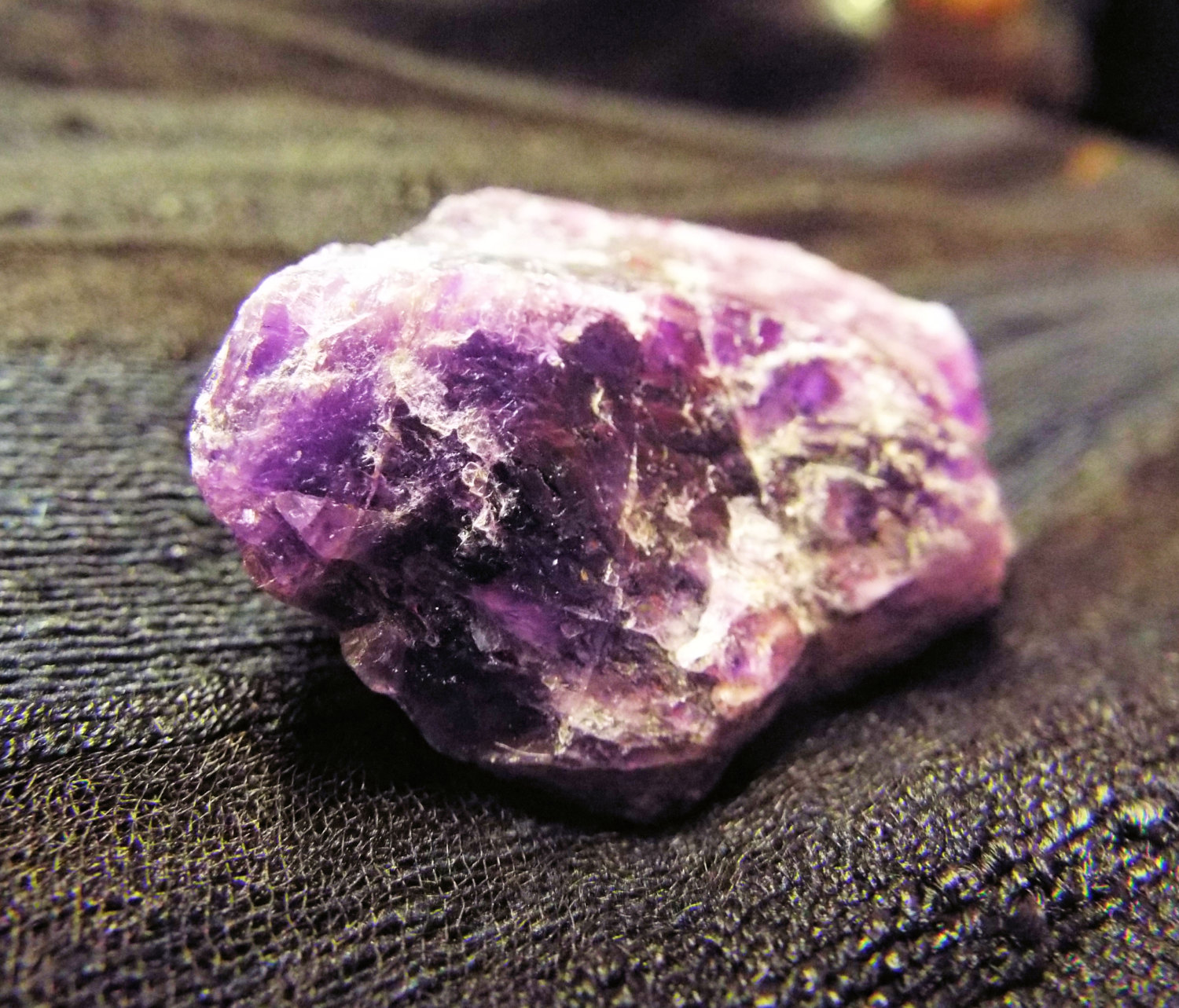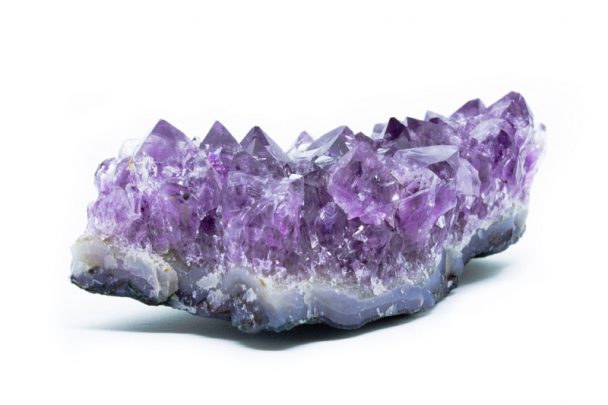
This photo shows a matched pair of cathedral geodes which are two halves of the same cavity. Geodes ready for shipment: Geodes from Brazil and other collecting localities are carefully crated to prevent damage during shipment. Some geodes are produced by mining the host rock, but that method is difficult, costly, and often damages the geode. In these situations the geodes are easily found and collected. The host rock weathers away and the geodes are left on the surface, washed into a stream, or stranded in a residual soil. This can occur because basalt, limestones, dolomites, and shales weather much more readily and rapidly than the quartz and chalcedony that typically form the outer layer of a geode. Geodes are most easily collected when their host rocks have weathered away. They are generally smaller than the geodes formed in volcanic rocks. These cavities can be filled with quartz, opal, agate or carbonate minerals. Shells, tree branches, roots and other organic materials often decay away to leave a void for the formation of mineral materials. In these deposits a gas-filled void can serve as the opening for geode formation. Geodes in sedimentary rocks are usually found in limestones, dolomites, and calcareous shale. Image by ilovebutter, used here under a Creative Commons License. Geode-cutting demonstrations usually attract a cheering crowd at gem and mineral shows. However, the pair of blades used to shear the bolt is replaced by a chain that is tightened around the geode until it breaks cleanly in half. The device used for breaking geodes looks like a long-handled bolt cutter.

Many of them have the geometry of long tree branches, being nearly a meter in diameter and many meters in length.īreaking a Geode: An exhibitor at a gem and mineral show preparing to break a geode. Many cathedral geodes are branches of these lava tubes that later infilled with mineral material. These small "lava tubes" produce some of the largest and longest geodes. Other voids in solidified lava flows were produced as liquid lava flowed out after the flow was only partially solidified. Some of that gas can be trapped in the lava to produce a large cavity when the lava solidifies. When the magma erupts as a lava flow, so much gas is released that not all of it is able to escape. (Think about that - several percent gas by weight!) When these magmas ascend to the surface, the gas expands in proportion to the pressure reduction. They can be several percent dissolved gas on the basis of weight. Where does all of the gas come from? Some magmas contain a lot of dissolved gas. Some voids are spaces occupied by gases that failed to escape the lava flow before its surface crusted over. Voids in basaltic lava flows often are infilled with agate, quartz, opal and other material delivered by hydrothermal water or groundwater. The most widely known and sought-after geodes are those that formed in areas of volcanic activity.

Image copyright iStockphoto / WojciechMT. Each colored band represents an episode of agate formation and a change in the composition of the groundwater that delivered mineral material into the geode. The Story in the Rock: A spectacular sawn and polished geode specimen with multiple layers of colorful agate and a crystal-filled central cavity. There is something special about a beautiful treasure hiding in a rock that looks absolutely ordinary from the outside. When geode-opening demonstrations are given at rock and mineral shows, they always draw a crowd - and that crowd usually produces enthusiastic cheers and gasps when a nice geode is opened.

Geodes sell rapidly at gem and mineral shows, science museums, rock shops, art galleries and shops that feature international or natural gifts.

Brazil, Uruguay, Mexico, and Namibia are four examples of countries where geodes have become a local industry. In several parts of the world, geode localities have spawned profitable industries that collect them, prepare them for market, and ship them to destinations where they are purchased as items of science, natural art and enjoyment. They love tiny geodes as jewelry, sawn and polished geodes as bookends, and spectacular amethyst geodes as items of home or office decor. Broken open, or sawn and polished, people who have never taken a geology course buy thousands of tons of geodes each year. They are delighted and amazed that an uninteresting rock can contain a beautiful cluster of gemmy crystals, or a colorful lining of banded agate, or both of those in the same cavity. However, the general public has a love affair with them.


 0 kommentar(er)
0 kommentar(er)
